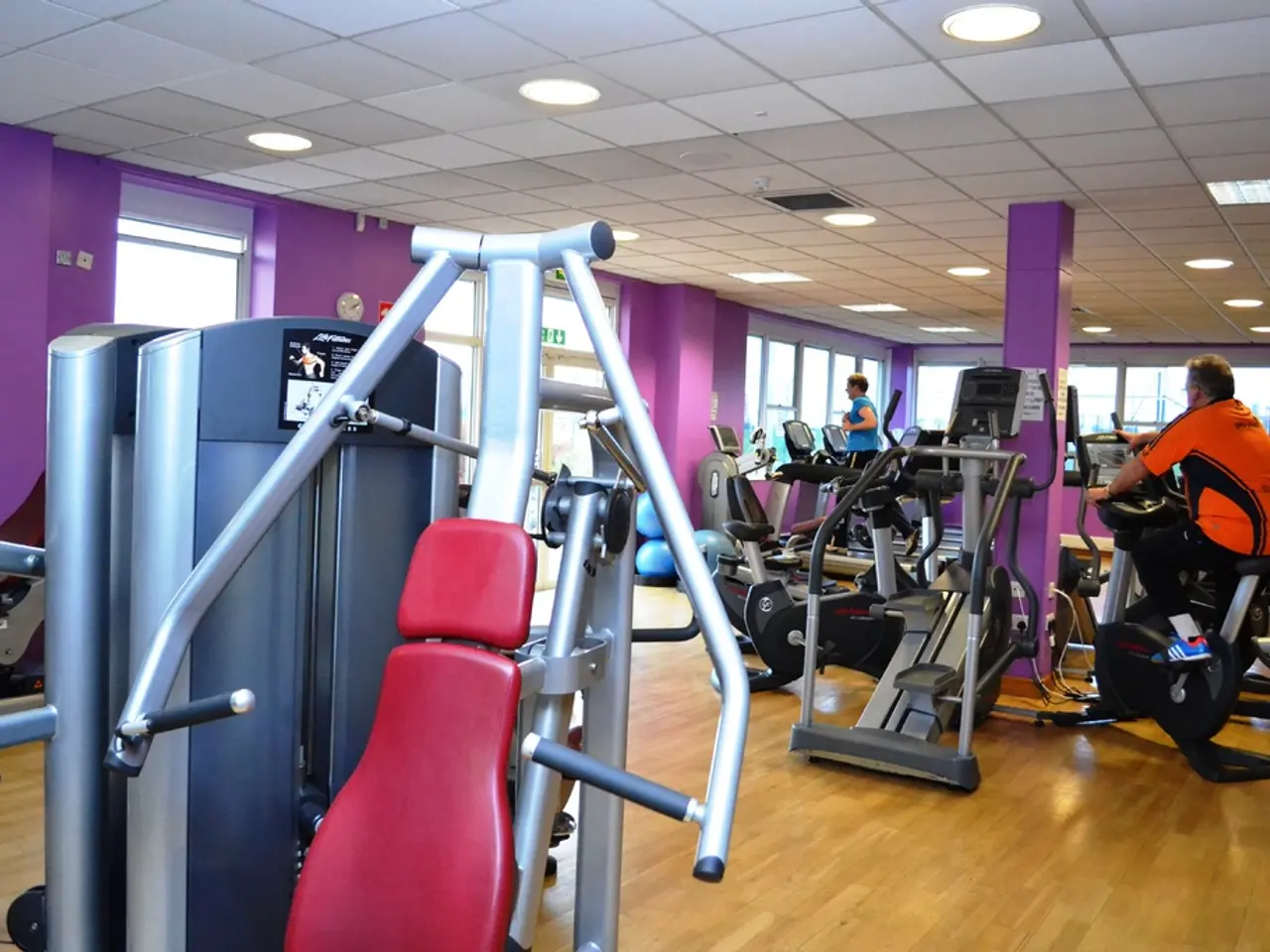Intense Interval Workouts (HIIT): Advantages and Starting Strategies
High Intensity Interval Training (HIIT), a popular exercise method, has gained recognition for its ability to deliver significant fitness and health benefits in less time compared to traditional moderate-intensity exercises.
At the heart of HIIT lies a simple concept: short bursts of intense exercise followed by periods of rest or low-intensity exercise. This approach, which can be adapted to various forms of exercise, has been scientifically proven to provide superior improvements in cardiorespiratory fitness, cardiovascular health, and muscle remodeling.
Research indicates that just 10 minutes of intense exercise in a 30-minute HIIT session can yield the same benefits. The duration of the intense exercise phase can range from less than 45 seconds to a few minutes, making HIIT a flexible workout option that can be easily fit into any schedule.
One of the key advantages of HIIT is its time efficiency. An entire HIIT workout can be as short as 15-20 minutes, including a 5-minute warm-up, a 15-minute HIIT circuit, and a 5-minute stretching session to cool down. This makes it an ideal choice for those who find it difficult to fit physical activity into their busy lives.
HIIT workouts can be performed anywhere, without the need for classes or equipment. Whether at home, in a park, or in a gym, HIIT offers a wide range of benefits without requiring expensive equipment or a gym membership.
Beyond its time-saving advantages, HIIT has been found to improve heart and lung health, boost metabolic health, increase oxygen supply to the muscles, and improve exercise tolerance. It has also shown promise in improving mental health, potentially reducing the severity of depression, although further high-quality trials are needed to support these findings.
A study conducted on a group of individuals from a psychiatric day care unit found that an 8-week program of HIIT workouts led to mental and physical improvements. The results showed decreased body mass index (BMI), lower resting heart rate, lower pulse pressure, decreased body weight, improved mental health scores, and reduced levels of depression and social avoidance.
Research has consistently found that HIIT workouts may help improve cardiovascular and metabolic health, decrease body fat, and improve mental health. A 10-week program of HIIT workouts, for instance, produced cardiovascular and metabolic benefits that were similar to those of moderate-intensity workouts, but with a significantly lower exercise time.
In comparison to steady-state exercises, some studies suggest that HIIT may burn more calories and help decrease body fat more effectively. For example, a study found that HIIT workouts using a hydraulic resistance system may burn more calories than equal periods of steadier forms of exercise.
In summary, HIIT provides superior improvements in cardiorespiratory fitness and cardiopulmonary function compared to traditional moderate-intensity continuous training, with sustained benefits and greater time efficiency. It also positively influences cardiovascular risk factors and muscle metabolism, making it a scientifically supported and effective training modality across diverse populations. With its flexibility, accessibility, and efficiency, HIIT is a workout worth considering for those seeking to improve their fitness and health.
[1] Gibala, M. L., Little, J. P., MacDonald, M. J., Martin, G. D., Van Baak, M., Vingren, J. L., ... & Tarnopolsky, M. A. (2012). Metabolic adaptations to high-intensity interval training in humans. Journal of Applied Physiology (Bethesda, Md : 1985), 112(3), 652-661. [2] Burgomaster, K. A., Howlett, J. G., Peart, J. M., Jones, P. H., Macdonald, I. A., & Gibala, M. L. (2010). Intermittent sprint-based exercise training improves insulin sensitivity and mitochondrial capacity in young and elderly humans. The Journal of physiology, 588(1), 131-140. [3] Weston, A. P., Gibala, M. L., Macdonald, M. J., Little, J. P., Tarnopolsky, M. A., & Phillips, S. M. (2010). Short-term high-intensity interval training improves insulin sensitivity and increases the expression of pancreatic and muscle insulin signaling proteins in young and elderly adults. Diabetes, 59(7), 1578-1586. [4] Gibala, M. L., & Little, J. P. (2012). The scientific case for high-intensity interval training: maximising exercise efficacy in the least amount of time. Journal of sports sciences, 30(sup1), S27-S30.
- A study using a hydraulic resistance system found that High Intensity Interval Training (HIIT) workouts may burn more calories than steady-state exercises, demonstrating its potential for effectively decreasing body fat.
- HIIT workouts have been found to positively influence cardiovascular risk factors and muscle metabolism, making it a scientifically supported training modality that offers sustained benefits and greater time efficiency.
- Research indicates that just 10 minutes of intense exercise in a 30-minute HIIT session can yield the same benefits as traditional moderate-intensity exercises, making it an ideal choice for those with busy lives.
- Beyond its time-saving advantages, HIIT has been found to improve heart and lung health, boost metabolic health, and possibly even reduce the severity of depression, although further high-quality trials are needed to support these findings.




